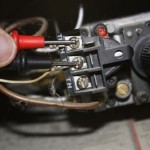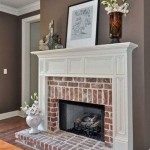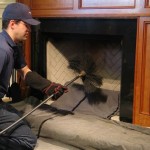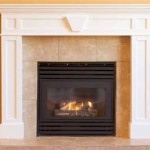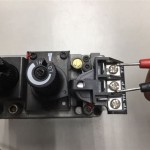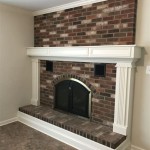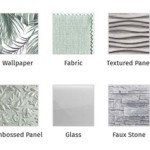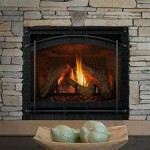Understanding the Appeal and Functionality of Gas Propane Fireplaces
Gas propane fireplaces have become increasingly popular as a convenient and efficient alternative to traditional wood-burning fireplaces. Their ease of use, consistent heat output, and reduced maintenance requirements make them an attractive option for homeowners seeking supplemental heating and ambiance. This article will explore the key features, benefits, installation considerations, and maintenance aspects of gas propane fireplaces.
The evolution of fireplace technology has led to the development of diverse fireplace options, ranging from traditional wood-burning units to electric fireplaces. Gas propane fireplaces represent a significant advancement by combining the aesthetic appeal of a real flame with the convenience and control of modern fuel sources. The ability to ignite the fireplace with the push of a button and regulate the flame height allows for customized heating and ambiance levels.
A gas propane fireplace operates by burning propane gas within a designated firebox. This firebox typically contains ceramic logs or other decorative elements designed to mimic the appearance of a natural wood fire. The propane is ignited by a pilot light or an electronic ignition system, and the flow of gas is controlled by a valve that can be adjusted to regulate the flame size and heat output. Exhaust gases are vented to the outdoors through a chimney or direct-vent system.
The efficiency of a gas propane fireplace is related to the type of venting system used. Direct-vent fireplaces draw combustion air from outside the home and vent exhaust gases directly outdoors through a sealed system. This design minimizes heat loss and eliminates the need for a traditional chimney, making direct-vent models highly efficient. Vent-free fireplaces, on the other hand, draw air from the room and vent combustion gases directly back into the living space. While vent-free models are typically less expensive to install, they require careful consideration of ventilation requirements to ensure safe operation.
Key Point 1: Advantages of Gas Propane Fireplaces over Traditional Wood-Burning Fireplaces
Gas propane fireplaces offer several distinct advantages compared to traditional wood-burning fireplaces. One of the primary benefits is convenience. Unlike wood-burning fireplaces that require manual loading of logs, gas fireplaces can be ignited and controlled with the simple push of a button. This ease of use makes them ideal for individuals seeking a hassle-free heating and ambiance solution.
Another significant advantage is consistent heat output. Wood-burning fireplaces can produce fluctuating heat levels depending on the type and amount of wood burned. Gas propane fireplaces, however, provide a steady and predictable heat output that can be easily adjusted to maintain a comfortable room temperature. This consistent heat regulation makes them a more reliable source of supplemental heating.
Reduced maintenance is another key benefit of gas propane fireplaces. Wood-burning fireplaces require regular cleaning to remove ash and soot buildup. They also necessitate chimney sweeping to prevent creosote accumulation, which can pose a fire hazard. Gas propane fireplaces, in contrast, produce minimal ash and soot, reducing the need for frequent cleaning and maintenance. A periodic inspection by a qualified technician is typically sufficient to ensure optimal performance and safety.
Environmental considerations also favor gas propane fireplaces. Wood-burning fireplaces can contribute to air pollution by releasing smoke and particulate matter into the atmosphere. Gas propane fireplaces, when properly maintained and vented, produce significantly fewer emissions, making them a more environmentally responsible choice for homeowners conscious of air quality.
Finally, gas propane fireplaces offer greater design flexibility. They can be installed in a variety of locations within a home, including rooms that lack a traditional chimney. This versatility allows homeowners to enjoy the ambiance of a fireplace in living rooms, bedrooms, or even bathrooms. The availability of different styles and finishes further enhances design possibilities, allowing for seamless integration with existing décor.
Key Point 2: Installation and Venting Considerations for Gas Propane Fireplaces
Proper installation of a gas propane fireplace is crucial for ensuring safe and efficient operation. The installation process typically involves connecting the fireplace to a propane gas line, venting the exhaust gases to the outdoors, and ensuring compliance with local building codes. It is highly recommended to hire a qualified and licensed technician for the installation to guarantee adherence to safety standards and prevent potential hazards.
The venting system is a critical component of a gas propane fireplace installation. Direct-vent fireplaces, as mentioned previously, are the most efficient option because they draw combustion air from outside and vent exhaust gases directly outdoors. The venting system consists of two concentric pipes: one for intake air and one for exhaust. This design minimizes heat loss and prevents backdrafting of combustion gases into the home.
Vent-free fireplaces, while simpler to install, require careful consideration of ventilation requirements. Because these models release combustion gases into the living space, adequate ventilation is essential to prevent the buildup of carbon monoxide. Many jurisdictions have restrictions or outright bans on vent-free fireplaces due to safety concerns. It is imperative to consult local building codes and regulations before installing a vent-free model.
The location of the gas propane fireplace should also be carefully considered. It is important to ensure that the fireplace is located away from flammable materials such as curtains, furniture, and rugs. Adequate clearances should be maintained around the fireplace to prevent overheating and potential fire hazards. The manufacturer's instructions should be carefully followed to determine the minimum clearance requirements for the specific model.
Prior to installation, a thorough inspection of the existing gas line should be conducted to ensure that it is in good condition and capable of supplying the required gas pressure. If the existing gas line is inadequate, it may need to be upgraded or replaced. A pressure test should be performed after installation to verify that the gas line is leak-free.
Key Point 3: Maintenance and Safety Practices for Gas Propane Fireplaces
Regular maintenance is essential for ensuring the safe and efficient operation of a gas propane fireplace. A periodic inspection by a qualified technician is recommended to identify potential problems and address them before they become serious. The inspection should include checking the gas line for leaks, inspecting the burner assembly for corrosion, cleaning the pilot light orifice, and verifying the proper operation of the venting system.
The burner assembly should be cleaned regularly to remove any dust, debris, or carbon buildup that could impede the flow of gas and affect the flame quality. A soft brush or vacuum cleaner can be used to clean the burner ports and surrounding areas. Avoid using harsh chemicals or abrasive cleaners, as they could damage the burner assembly.
The pilot light should be inspected regularly to ensure that it is burning cleanly and consistently. A weak or flickering pilot light could indicate a problem with the gas supply or the pilot light assembly. If the pilot light goes out frequently, it may need to be adjusted or replaced. A qualified technician should be consulted for pilot light adjustments or replacements.
The venting system should be inspected annually to ensure that it is free of obstructions and in good working order. Birds' nests, leaves, and other debris can accumulate in the vent pipe, blocking the flow of exhaust gases and potentially causing carbon monoxide buildup. The venting system should be cleaned if necessary to remove any obstructions.
Carbon monoxide detectors should be installed in homes with gas propane fireplaces to provide early warning of carbon monoxide buildup. Carbon monoxide is a colorless, odorless gas that can be lethal if inhaled in high concentrations. Carbon monoxide detectors should be tested regularly to ensure that they are functioning properly.
Finally, it is important to educate all members of the household about the safe operation of the gas propane fireplace. Children should be taught not to play near the fireplace and to never tamper with the controls. Adults should be aware of the potential hazards of gas propane fireplaces and should follow all safety precautions. A readily accessible fire extinguisher should be available near the fireplace in case of an emergency.
In conclusion, gas propane fireplaces offer a compelling combination of convenience, efficiency, and aesthetic appeal. By understanding the key features, benefits, installation considerations, and maintenance aspects of these fireplaces, homeowners can make informed decisions and enjoy the warmth and ambiance of a gas propane fireplace safely and effectively.

Propane Fireplaces An Economic Fuel

Enviro E Series Gas Or Propane Insert Fireplace Fireplaces By Cameron

Elevation 36 Direct Vent Fireplace Propane Electronic Ignition

Propane Fireplaces Gas Stoves Id Mt Wy Fall River

Vantage Bayview Freestanding Direct Vent Gas Or Propane Fireplace Fireplaces By Cameron

Propane Fireplace Inserts Gas Log Sets Tunkhannock Pa Ace Robbins

Superior 42 Stainless Steel Outdoor Propane Gas Fireplace Vre4342 The

Enviro S Series Freestanding Gas Or Propane Fireplace Fireplaces By Cameron

Napoleon Riverside Clean Face 47 Inch Outdoor Built In Propane Gas Fireplace W Millivolt Ignition And Brushed Stainless Steel Gss42cfn

Gas Fireplace Inserts Quick Install New Propane Usage
Related Posts

